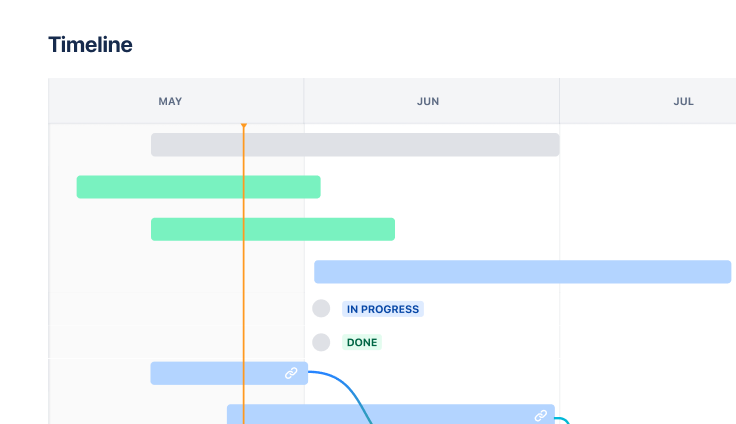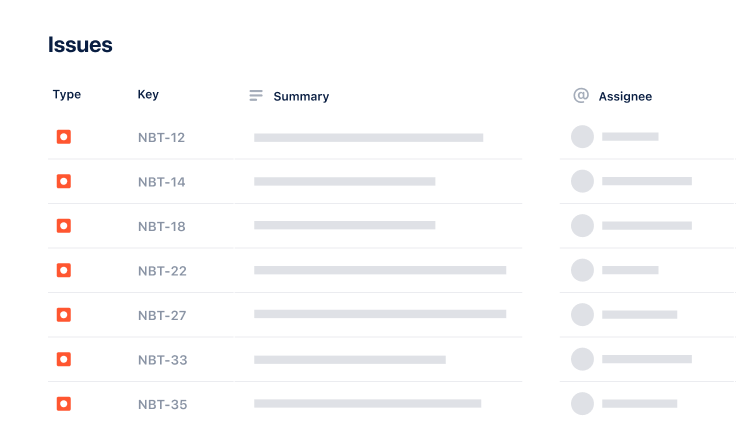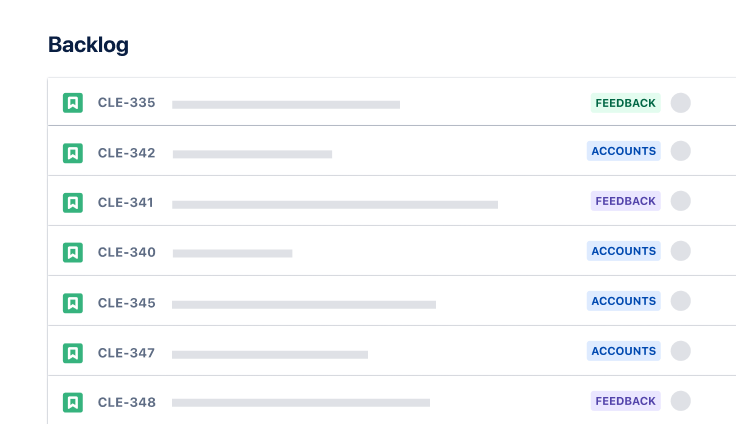
Project tracking template
Monitor every task and project milestone from conception to completion with a project tracking template.
BEST FOR
Project management
KEY FEATURES
Task planning
Prioritization
Pipeline management

What is a project tracking template?
A project tracking template monitors a project's progress by organizing tasks, timelines, and milestones. It provides a clear framework for tracking dependencies, assigning responsibilities, and ensuring the project stays on schedule.
Project overview
A project tracker template provides a centralized overview of your project, accessible by all team members. Including a project budget in the project tracker template helps manage resources effectively and ensure project success. By having one place to see how the project is progressing, you cut down on unnecessary communication that stifles productivity and flow.
Task management tool
A project tracking template allows you to track overall progress and monitor the status of individual tasks. Emphasizing the importance of tracking project progress ensures that you maintain oversight throughout the project's lifecycle. A good project tracking template provides easy-to-digest, visual answers that inform stakeholders about project or task status. Use a project tracking template to outline the milestones for each project phase, including start dates and the targeted completion date.
What does the project tracking template include?

Board
Kanban boards provide a structured and visual approach to task management, helping teams organize workflows and track progress in real-time. With columns like “To Do,” “In Progress,” and “Done,” teams can easily monitor task statuses and identify bottlenecks in the workflow. By using a Kanban board template, teams benefit from enhanced transparency, improved collaboration, and the flexibility to customize workflows to suit evolving project needs.

Timeline
Project tracking templates include a project timeline that shows due dates, milestones, and dependencies between tasks. This timeline helps facilitate effective communication between team members and all the various stakeholders as it provides access to essential information about the project’s status. Comparing actual progress with your projected timeline helps you identify and mitigate potential delays and resource bottlenecks early.

Lists
A project tracking template acts as a centralized hub for all pending tasks, utilizing the list view. Proper resource management is crucial when breaking down large tasks into smaller, more manageable subtasks. A template helps visualize the project workflow more accurately. With clear visibility of all project tasks, you can easily assign ownership to specific team members, improving accountability, enhancing efficiency, and ensuring awareness of deadlines and major milestones.
Why use a project tracker template?
A project tracker template simplifies project management by providing a clear structure for tracking tasks, timelines, and progress. Alternatively, project management software can enhance project organization by offering superior real-time collaboration, tracking, and reporting features. Here’s why it’s an essential tool:
Centralized project oversight: It offers a single platform for tracking all tasks, milestones, and dependencies, improving collaboration and reducing miscommunication.
Improved accountability: Assigning tasks with clear ownership ensures team members are accountable and deadlines are met efficiently.
Enhanced visibility: Keep the project on track, visualize progress, identify potential delays, and address resource bottlenecks early.
Streamlined communication: With accessible timelines and task statuses, stakeholders and team members stay aligned without excessive meetings or updates.
Risk mitigation: Early identification of issues through status monitoring and an integrated issues log helps resolve risks proactively.
A project tracker template ensures your team stays on track from start to finish by providing structure, clarity, and accountability. Ready to start optimizing your workflow? Here’s how to get started with a project tracking template.
Benefits of using a project tracking template
Using a project tracking template can benefit project managers and teams. Here are some of the most significant advantages of using a project tracking template:
Improved project visibility and transparency
A project tracking template provides a clear and concise overview of the project’s progress, allowing team members and stakeholders to track the project’s status easily. This improved visibility and transparency enables teams to identify potential issues early on and make informed decisions to ensure the project stays on track. By having a centralized view of all project tasks, milestones, and deadlines, project managers can quickly assess the project's health and take corrective actions if necessary.
Enhanced collaboration and communication
Project tracking templates facilitate collaboration and communication among team members by providing a centralized platform for sharing information and updates. This helps ensure everyone is on the same page and working towards the same goals, reducing misunderstandings and miscommunications. With a project tracking template, team members can easily see who is responsible for each task, track progress, and provide updates, fostering a more collaborative and cohesive work environment.
Better risk management and issue tracking
A project tracking template allows teams to identify and track potential risks and issues, enabling them to develop mitigation strategies and take proactive measures to minimize their impact. This helps to reduce the likelihood of project delays, cost overruns, and other negative outcomes. By maintaining an issues log and regularly monitoring task statuses, project managers can address problems before they escalate, ensuring a smoother project execution.
Best practices for project tracking
Regularly reviewing and updating the project plan is crucial to ensuring the project stays on track. This involves reviewing the project’s progress, identifying any deviations from the plan, and making adjustments as needed.
By regularly reviewing and updating the project plan, teams can ensure that they’re working towards the same goal and that the project is progressing as expected. This practice helps maintain alignment with project objectives and ensures teams can adapt to any changes or challenges.
How to get started with the project tracking template
- 1
Define project scope
To use the project tracker template in Jira, first articulate the scope of work. Consider these questions:
What are the project’s overall objectives?
What deliverables does the project need to achieve those objectives?
What resources are necessary?
What constraints will the team face?
As the project scope evolves, what is the change control process?
Your answers will help define the project’s scope and clarify the work necessary to complete the project. These answers also help define the processes your team will follow when issues arise. Clearly outlining the process at the start helps alleviate any delays.
- 2
List all tasks
List all the tasks required to achieve your objectives. Include a due date, assignee, priority, and any dependencies. Break down large tasks into manageable and achievable subtasks to prevent overburdening team members.
- 3
Establish a project timeline
Working backward from the project completion date, map out the due date for every project milestone. This provides goalposts to measure overall progress. Create a realistic and manageable project timeline that you can track and measure.
- 4
Assign responsibilities
Assign each task to a specific team member based on their skills and expertise. Reassign tasks if overload occurs. Agile project management encourages team members to take on tasks they have the bandwidth to handle. Ensure someone is accountable for seeing each task through to completion.
- 5
Regularly update and monitor
Establish a regular cadence for meeting and updating the project tracking template, whether that’s a weekly backlog grooming meeting or a daily standup for an Agile team. This helps foster continuous improvement.
Related templates

Marketing
Jira project management template
Manage activities for completing a business project.


Software Development
Scrum template
Visualize, track, and manage your work easily from sprint to sprint.